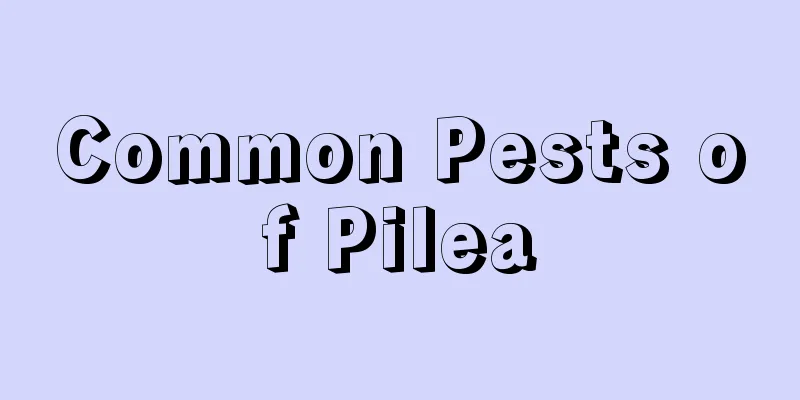How to grow camellia more vigorously?

|
Camellia, as one of China's traditional flowers, is known as one of the "Top Ten Famous Flowers". It has won the love of many flower lovers with its elegant tree shape, dark green leaves, evergreen characteristics, and bright flowers. However, if not managed properly, camellia may have problems with yellowing leaves or withering buds before they open. Many friends think that camellia is difficult to grow, so how can we grow camellia more vigorously? 1. Soil selection and air permeability When planting camellia in pots, it is recommended to use sandy soil with good air permeability. Loess or humus soil are also good choices. You can also mix mountain mud, leaf mold and sand. If you choose nutrient soil, you can mix peat soil, leaf mold and garden soil in a ratio of 1:2:1 and use it. 2. Reasonable watering When planting camellia, make sure the roots are in close contact with the soil to avoid growth problems caused by poor contact. After planting, you can use a small wooden stick to gently poke around the roots so that the soil and roots are tightly combined. After planting, water thoroughly to help the roots take root. You can water it several times. Do not water too much at normal times, and wait until the surface of the soil in the pot is dry before watering. Camellia is relatively drought-resistant, so there is no need to worry too much about water shortage. 3. Fertilization strategy Camellia has a short vegetative growth period and spends most of its time nurturing buds, so fertilization should be adjusted according to the growth period. From spring flowering to early summer is the vegetative growth period of camellia. At this time, new buds grow rapidly. You can apply balanced growth fertilizer of nitrogen, phosphorus and potassium, or sprinkle controlled-release fertilizer along the edge of the pot to promote the growth of new branches. In summer, camellia begins to differentiate flower buds and nurture flower buds. After the summer begins, phosphorus and potassium fertilizers can be applied 2-3 times. It is recommended to stop fertilizing in midsummer, and start applying phosphorus and potassium fertilizers again in late September in autumn, and keep applying once every 15 days or so until the camellia blooms. 4. Lighting management Camellia likes light but cannot tolerate strong sunlight. It can be kept in full sun in spring, autumn and winter. It should be maintained in the shade in summer and can be placed under the shade of trees or in a place with scattered light to avoid direct sunlight and prevent sunburn on the leaves and the occurrence of sooty disease. 5. Bud thinning techniques Camellia is a vigorous flowering plant that usually produces many flower buds regardless of plant size. But too many flower buds are not a good thing, as they may lead to insufficient nutrients and cause the flower buds to wither and turn yellow before they bloom. It is necessary to thin out the buds. This can be done when the buds grow to the size of soybeans, or you can wait until the buds are clearly visible before thinning them out. When thinning buds, cut off most of the unnecessary buds, leaving 1-2 buds on each branch to concentrate the nutrient supply and make the camellia bloom bigger and more beautiful. 6. Summer and winter management It is relatively easy for camellia to survive the summer, as long as it is avoided from strong sunlight. During the hot summer, camellia grows slowly, so it is recommended to stop applying water-soluble fertilizers to prevent fertilizer damage. Camellia has average cold resistance, and most varieties can withstand temperatures as low as -5℃. In areas south of the Yangtze River, it can overwinter naturally in the open air, but in northern areas it needs to overwinter indoors to prevent frostbite. For camellia plants grown indoors, attention should be paid to ventilation in winter, especially opening windows more often during warm noons to reduce leaf falling. The above is the daily maintenance and management method of camellia. You can adjust the management plan according to the basic situation of your own camellia. As long as you do these things well, the camellia can generally bloom normally.
|
<<: How to grow Rouge Cloud in winter, what to do if the bottom leaves wither
>>: How to grow bird's nest fern, bird's nest fern pictures
Recommend
Cultivation methods and precautions of pink vine
1. Maintenance methods 1. Substrate selection: Pi...
How to grow asparagus fern to make it more vigorous (what fertilizer to use, how to prune)
1. Suitable lighting It likes a semi-shady enviro...
What are the benefits of growing cyclamen at home?
The role of cyclamen Watch Cyclamen is known as t...
Cultivation methods and precautions of Yunnan Paris polyphylla
1. Soil Paris polyphylla grows well in slightly a...
How to grow carnations during their flowering period
1. Flowering period First of all, you need to und...
What are the advantages and disadvantages of watering flowers with vitamins? The nutritional effect of watering flowers
Benefits of watering flowers with vitamins Vitami...
How to grow palm in water after growing it in soil
1. Remove the pot and prune the roots If you want...
How long does it take for Jade Leaf cuttings to take root?
Rooting time of Jade Leaf cuttings Jade Plant can...
How to propagate Dieffenbachia
1. Water insertion method This breeding method is...
Can succulents survive if their heads are cut off in winter?
1. Can succulents survive if their heads are cut ...
How to prune and shape banyan bonsai (these methods and precautions should be mastered)
How to prune and shape a small banyan bonsai Bany...
How to cultivate Baixiangyan
1. Soil Cultivating white fragrant rock does not ...
What to do if Clivia grows slowly
Bad flower pots When growing Clivia, you first ne...
When is the best time to plant Guangdong choy sum?
Chinese cabbage, also known as cauliflower and ca...
Does Chinese toon prefer shade or sun?
Does Chinese toon prefer shade or sun? Toona sine...









